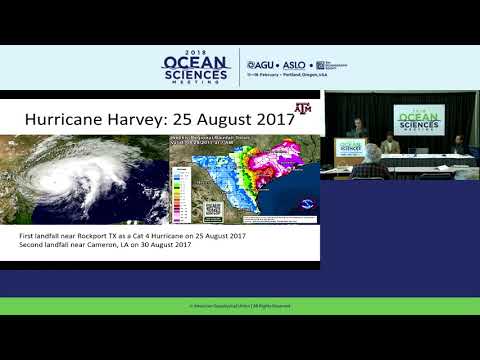Description:
Explore the unusual ocean conditions that contributed to Hurricane Harvey's record-breaking rainfall and flooding in this press conference from the 2018 Ocean Sciences Meeting. Delve into new research findings on Harvey's atypical storm surge, the strong ocean currents it generated, and the large amount of ocean heat that fueled the storm's rapid intensification. Learn about the deployment of CTD instruments, data from the Texas Automated Buoy System, and observations of freshwater impacts, oxygen concentration, and water levels in Galveston Bay. Gain insights into the importance of oceanic observations for understanding and predicting extreme weather events. Hear from experts as they discuss the implications of these findings for future hurricane preparedness and the potential impacts of sea level rise on storm surges.

Unusual Ocean Conditions and Hurricane Harvey
Add to list
#Conference Talks
#American Geophysical Union
#Data Science
#Data Analysis
#Science
#Earth Science
#Oceanography
#Environmental Science
#Natural Disasters